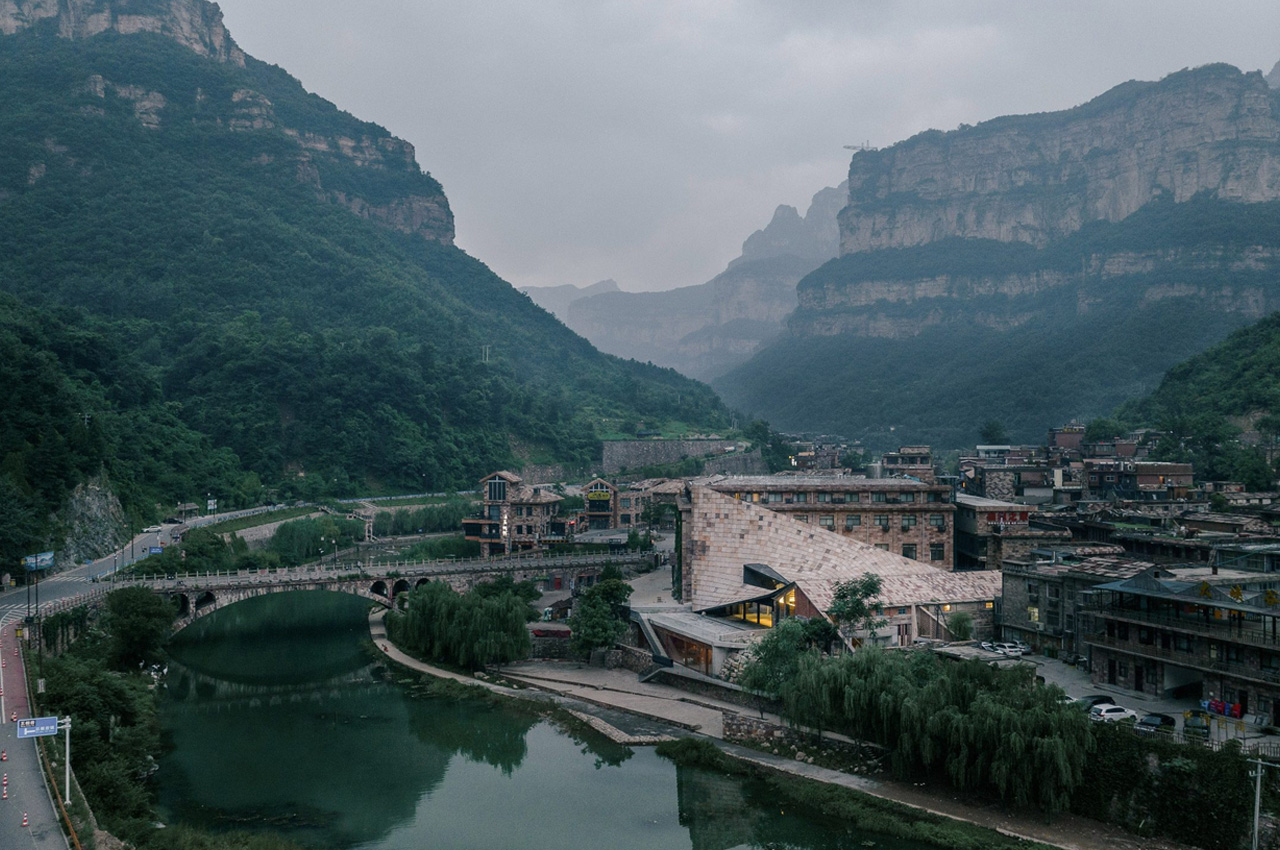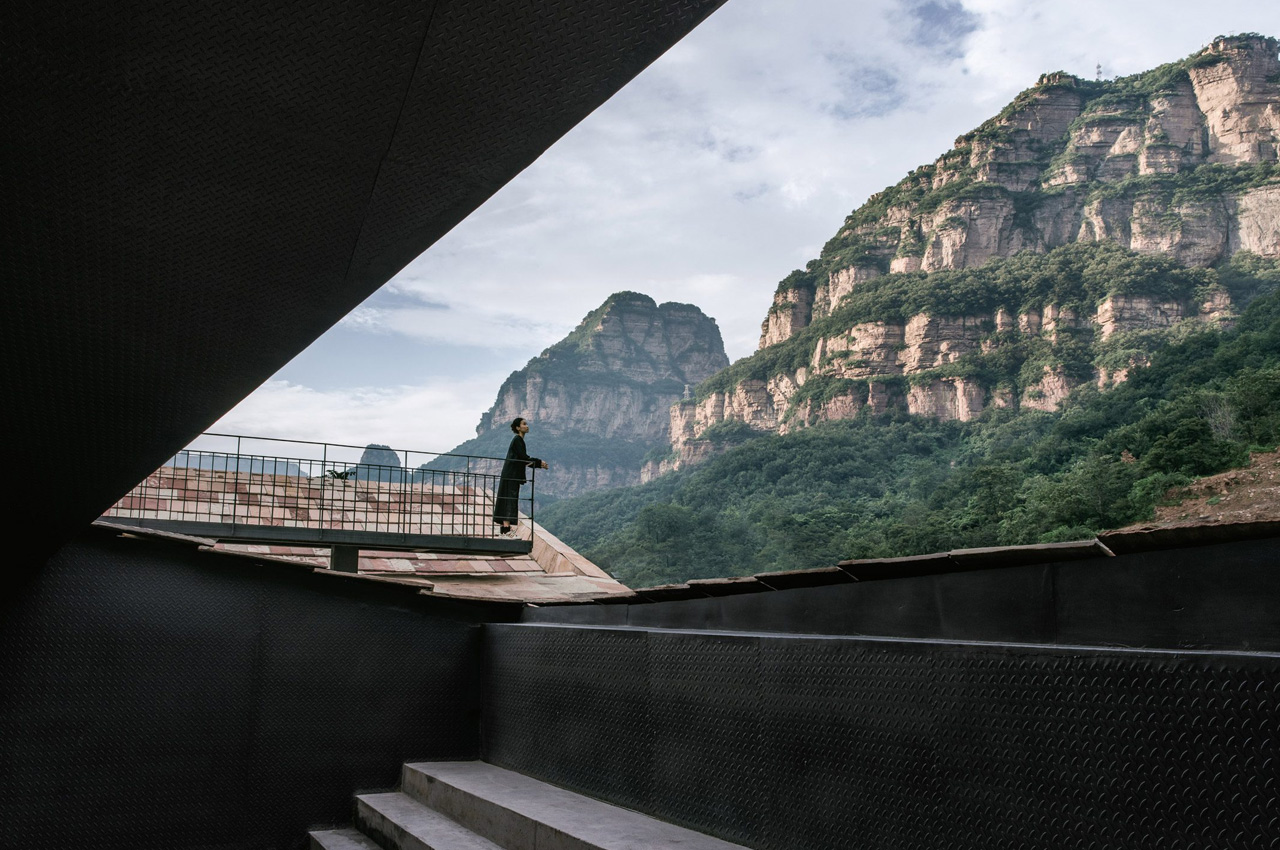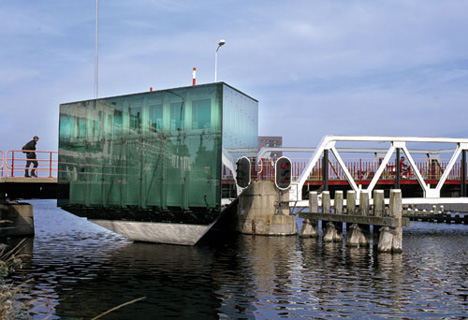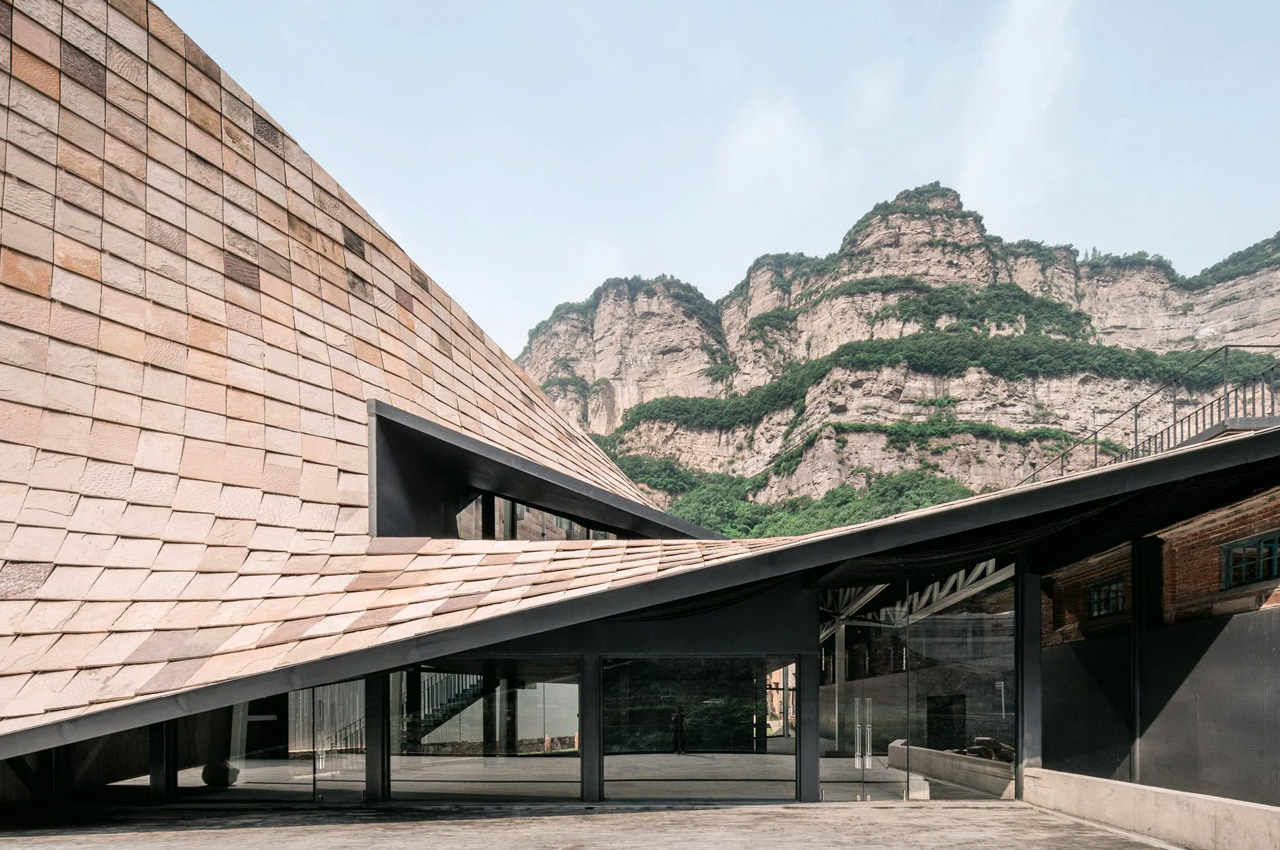
Chinese architectural practice Wang Chong Studio utilized rustic stone walls, and an enchanting sloping rofe to preserve the Taihang Xinyu Art Museum, which is located alongside the Cangxi River, with the Taihang Mountains as its backdrop. The studio used recycled local stone to artfully merge the art museum with the rocky site it is located in, in China’s Henan Province.
Designer: Wang Chong Studio
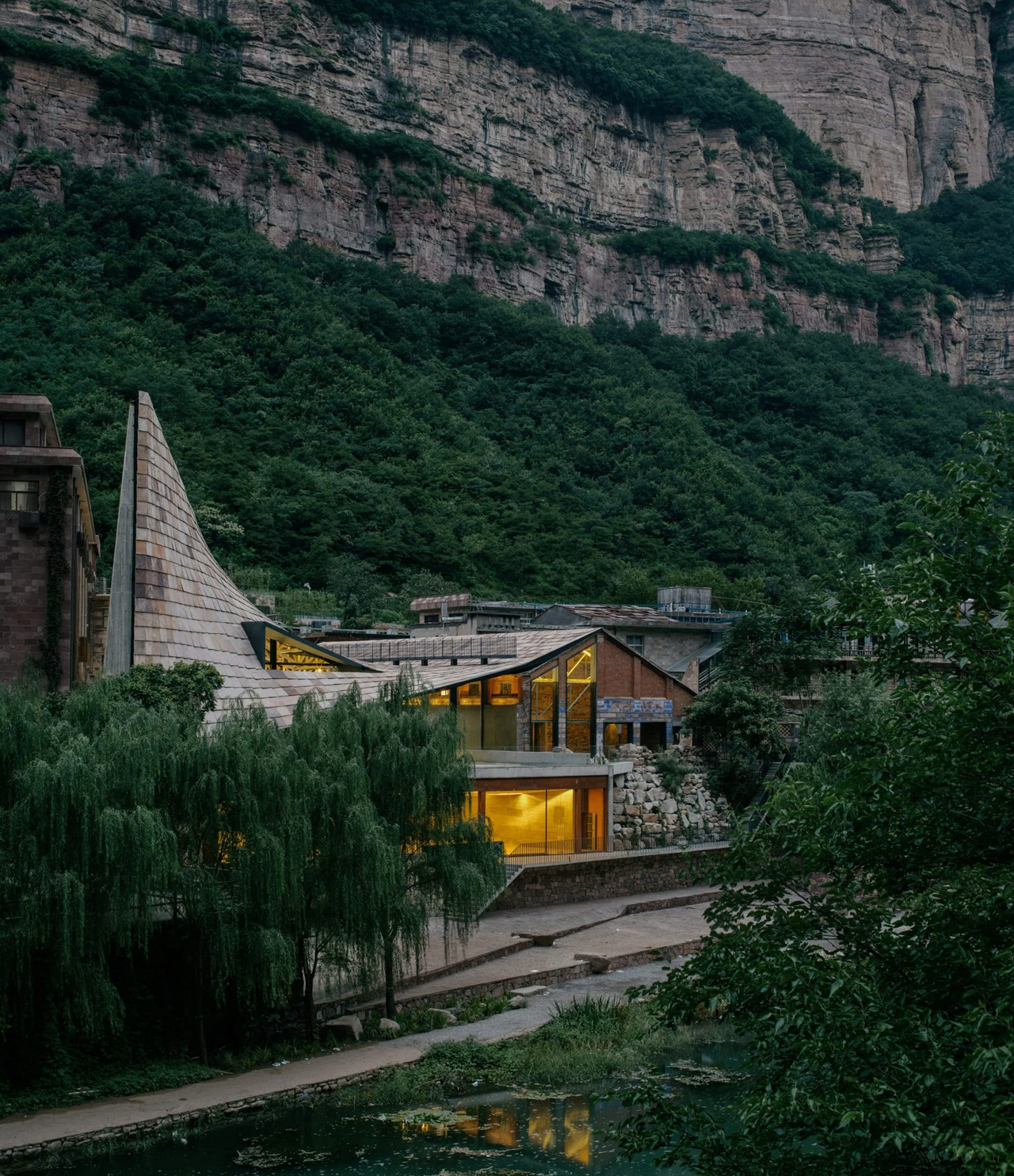
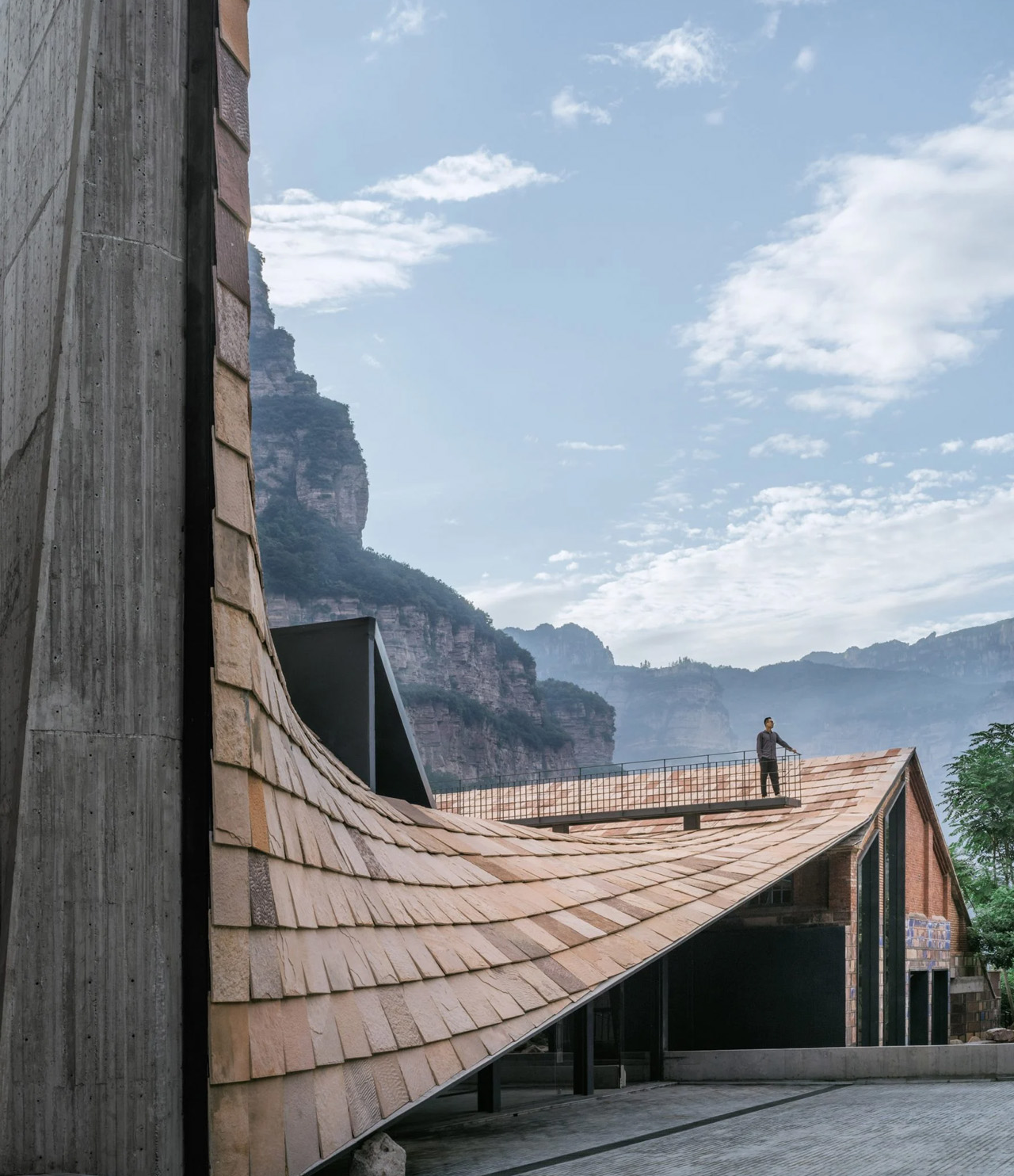
The studio wanted to bring the history of the region to the limelight. It topped the art museum with a sculptural tiled roof which seems to blend perfectly with the natural landscape. In fact, it looks as if the roof is growing out of the landscape. “The transformed, rather than demolished, warehouses effectively reflect heritage, identity, and the site’s background,” said studio founder Wang Chong. “The new building volume that surrounds it creates a hybrid method that is more effective than tabula rasa or ‘repairing the old as the old’.”
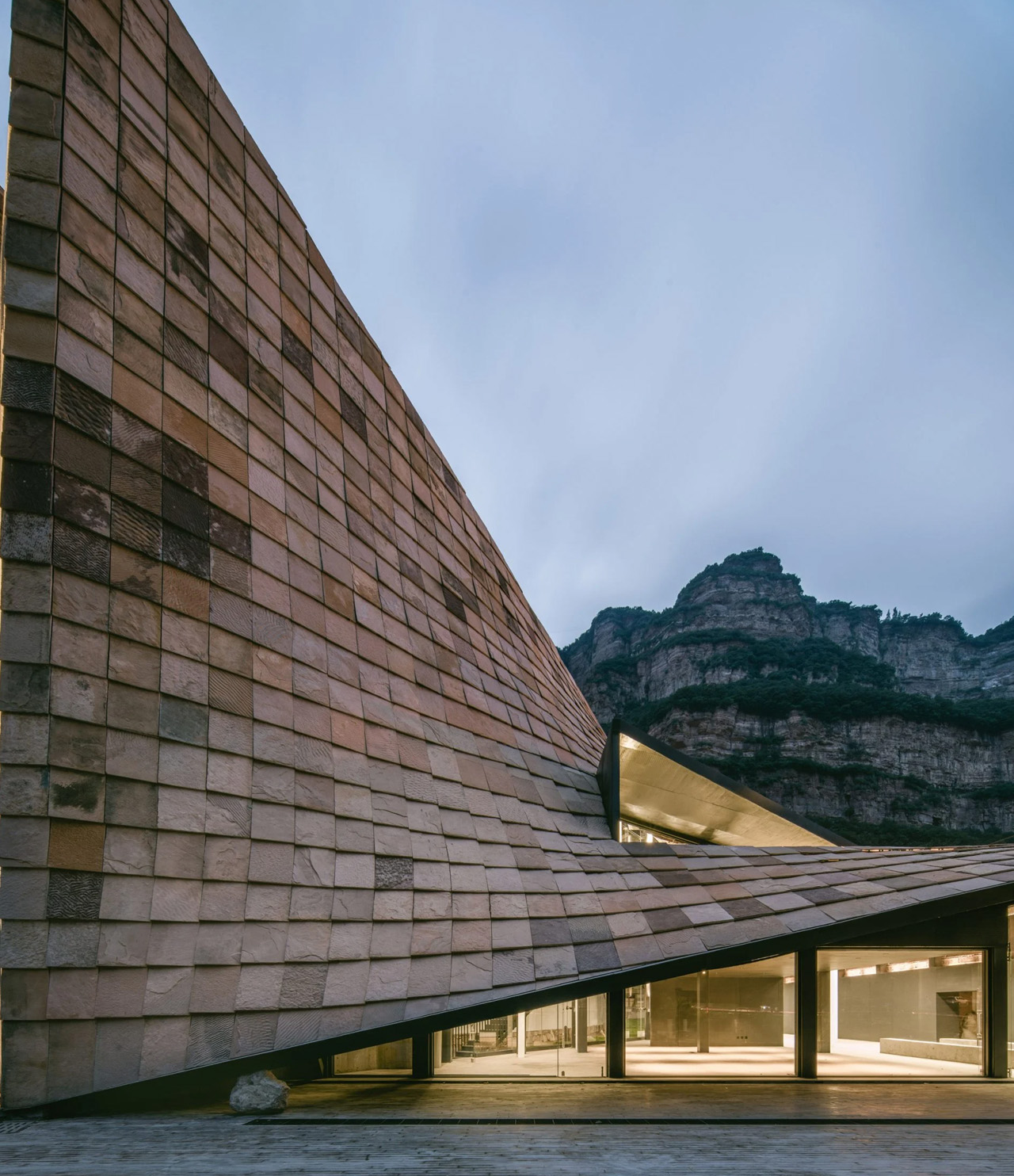
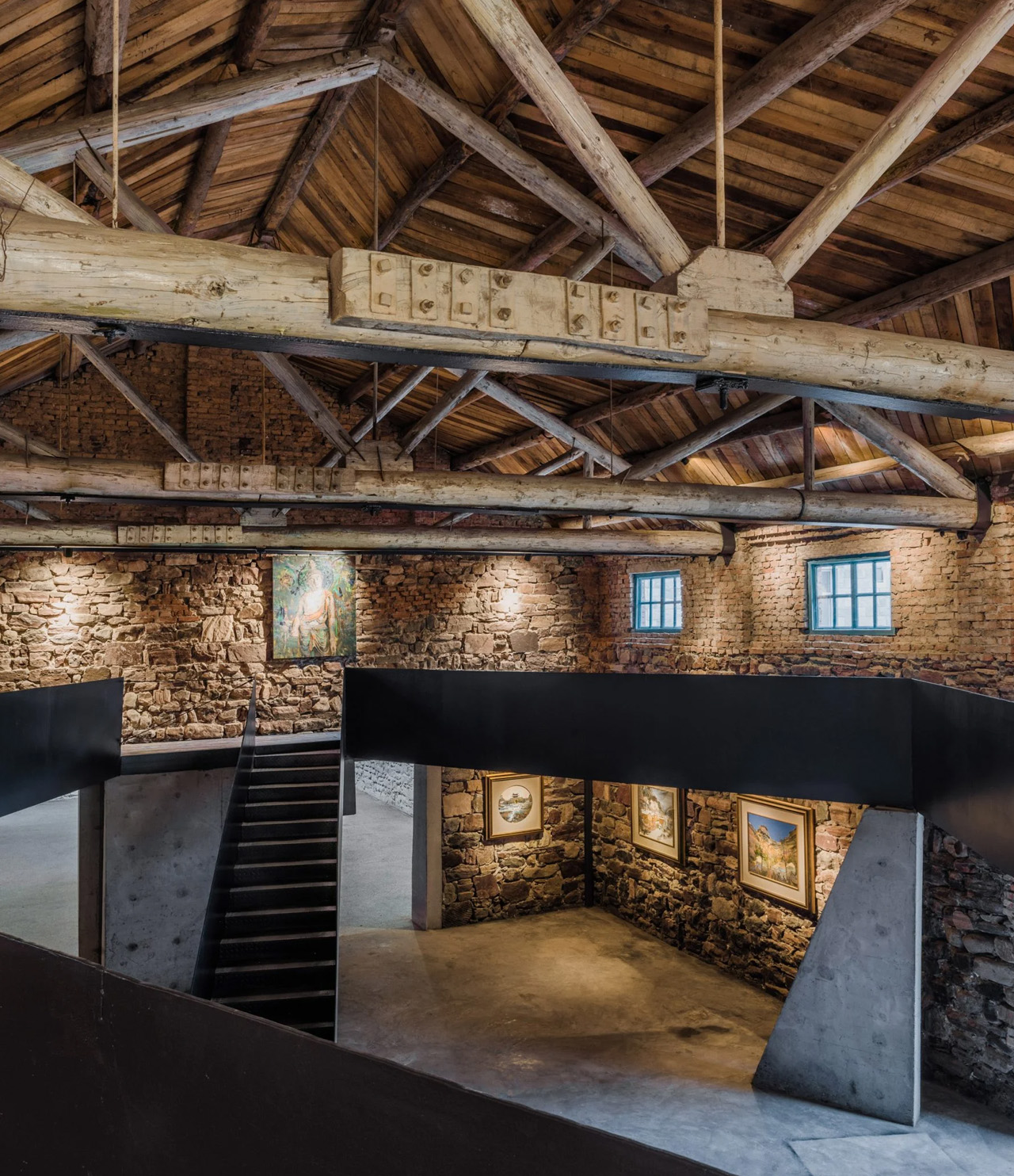
A stunning waterside courtyard with stone elements and stepped paths welcomes you to the museum and provides lovely views down the river. “Traditional Chinese landscape paintings try to describe the paths into the mountains layer by layer, which inspired us to design layers of retreats and zigzag mountaineering paths in the site adjacent to the water and back of the mountain,” said Wang. Quite interestingly, the museum has been equipped with a restaurant. It is located in the excavated portion of the hillside below the museum, with massive floor-to-ceiling windows providing attractive views of the neighboring courtyard.
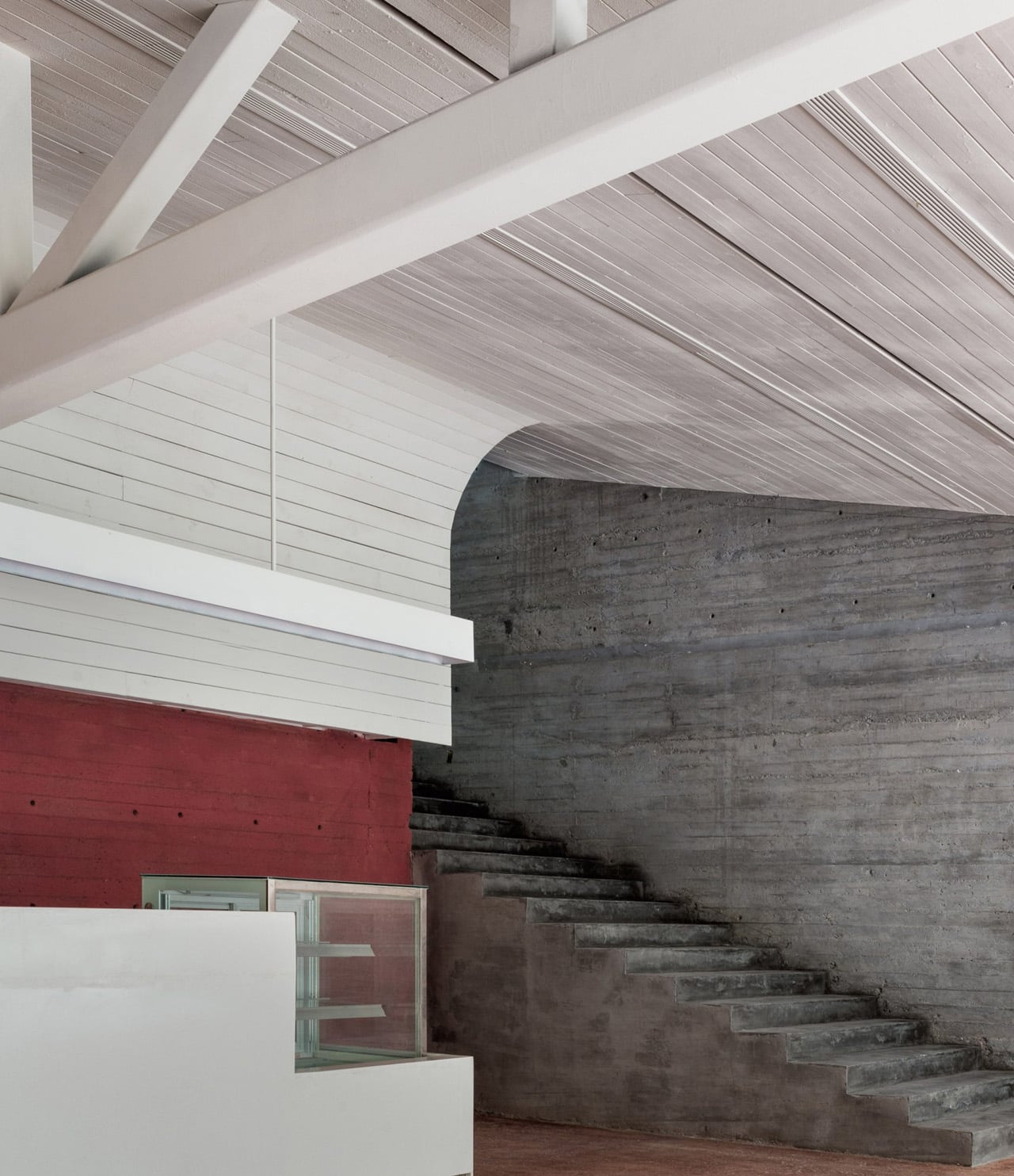
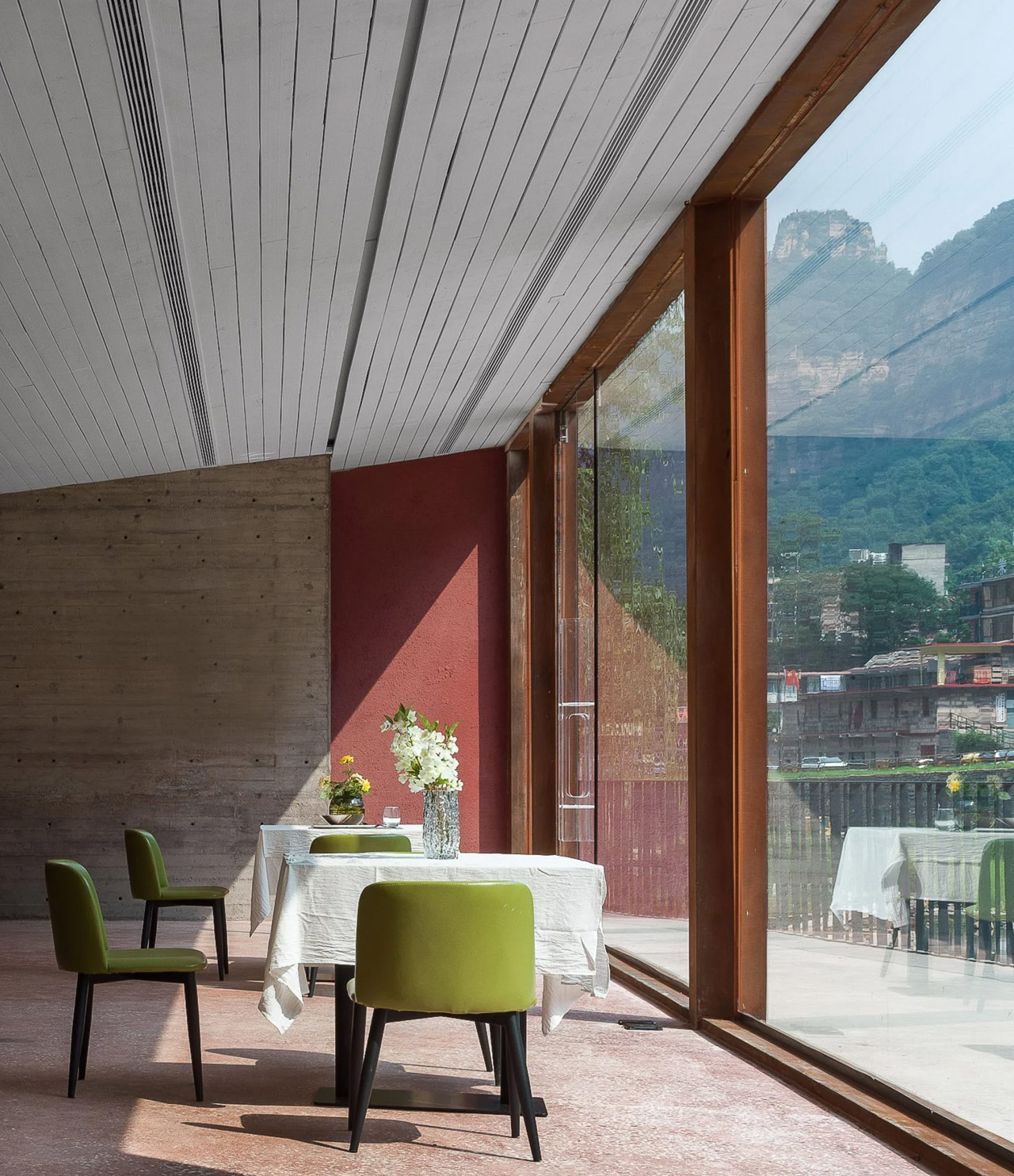
The Taihang Art Museum can be accessed by a stone staircase, and it consists of a series of exhibition spaces that have been divided by rugged stone walls. The gallery spaces showcase pre-existing elements from the site. The sloping curved roof tops this space, and creates segregated spaces that have ceilings that differ in height. “The sloping roof draws inspiration from the Chinese-style large roof,” said Wang. “In ancient Chinese architecture, the large roof is described as ‘like a bird spreading its wings and a pheasant spreading its wings and flying’, as if the wings bring a light feeling.”
